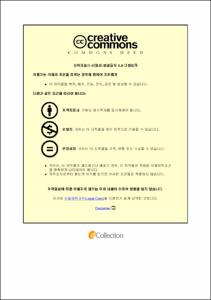뭉침과 대립의 집단동역학 연구
- Alternative Title
- Collective dynamics of clustering and polarization: A study of legislative co-sponsorship data
- Abstract
- People have different opinions on each issue in society. Opinion dynamics deals with mechanisms of opinion formation, such as how different opinions merge, split, and co-evolve with the underlying interaction structure. In this study, we wish to study opinion dynamics both empirically and theoretically. Specifically, to understand the interaction among lawmakers, we begin by analyzing the co-sponsorship data of the 20th National Assembly of the Republic of Korea. The principal component analysis (PCA) shows that the party membership of lawmakers explains most of the co-sponsorship patterns. We also find that a lawmaker’s deviation from the party’s average behavior is precursory of his or her membership change. We furthermore apply the PCA to the co-sponsorship data of the National Assembly over the past 70 years. The political polarization in the National Assembly was evident before the 6th Republic, and it was resolved with the establishment of democracy. This result is consistent with the median voter hypothesis (MVH), which predicts convergence of party platforms across a one-dimensional political spectrum during majoritarian elections. However, the correlation matrix has become more and more multi-dimensional under the action of party politics, which invalidates the assumption behind the hypothesis. Moreover, polarization does not completely vanish in a democratic society. To understand the reason, we devise a model in which the position of the median voter perceived by each party is different in the primary and in the final election. In this model, we prove that the candidates’ positions tend to be widened symmetrically from the median voter among the whole electorate, which is confirmed by numerical simulation. To sum up, by looking into the National Assembly, we have discovered the following: First, the division within the Assembly usually coincides with the party membership of lawmakers. Second, the establishment of democracy reduces the degree of polarization but does not remove it completely. Third, the residual polarization can be explained by the non-uniqueness of the median voter as exemplified by primary elections.
- Issued Date
- 2022
- Awarded Date
- 2022. 2
- Type
- Dissertation
- Publisher
- 부경대학교
- Alternative Author(s)
- Jonghoon Kim
- Affiliation
- 부경대학교 대학원
- Department
- 대학원 물리학과
- Advisor
- 백승기
- Table Of Contents
- I. 서론 1
1. 연구의 목적 1
2. 용어의 정의 2
2.1. 공동발의 2
2.2. 주성분 분석(Principle Component Analaysis, PCA) 4
2.3. 중위 투표자 정리(Median Voter Hypothesis, MVH) 5
2.4. 4강전 문제 6
II. 데이터 및 방법론 8
1. 데이터 8
1.1. 발의안 데이터 8
1.2. 공동발의에 영향을 끼치는 잠재적 요인 9
2. 방법론 11
2.1. 주성분 분석(PCA) 11
2.2. 유사도 검사 13
2.3. 양봉계수와 분산 15
III. 결과 18
1. 20대 국회 분석 결과 18
1.1. 공동발의에 숨겨진 요소 19
1.2. 주축 분석 결과 21
1.3. 소속 정당 변경 23
2. 국회 전반에 대한 분석 결과 25
3. 양극화의 원인 26
4. 미국 하원 의회의 사례 30
IV. 결론 및 논의 34
참고 문헌 37
- Degree
- Master
- Files in This Item:
-
-
Download
 뭉침과 대립의 집단동역학 연구.pdf
기타 데이터 / 2.26 MB / Adobe PDF
뭉침과 대립의 집단동역학 연구.pdf
기타 데이터 / 2.26 MB / Adobe PDF
-
Items in Repository are protected by copyright, with all rights reserved, unless otherwise indicated.